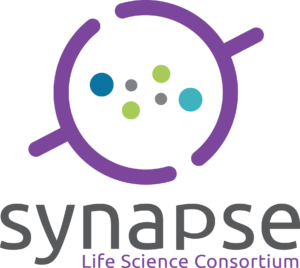Sep-2022
3 ways smart site selection is helping Life Sciences companies turn innovation into commercialization
Business location is a massive factor in the success of a company and its various subsidiaries, with the local talent pool, transportation infrastructure and business conditions all playing important parts. For innovative companies looking to be at the top of their game, business location can also be a hugely influential factor in how quickly and competitively they are able to ideate, develop, test and commercialise new products.
In the life sciences industry, the translation of research into real-world solutions has been something of a pain point. The stakes are high and it is a difficult, risk-ridden process colloquially referred to as the ‘valley of death’.
When accelerating R&D and bringing a complex product to market, location matters. Here are three examples from Hamilton, Ontario – Canada’s emerging leader in life sciences research and commercialization.
1. Innovation parks
Purpose-built, multi-company environments with private office space, laboratories and meeting areas – plus space for crossover, coworking and collaboration – are on the rise. These hubs are often developed by some of the world’s most research-led universities, making them the perfect bridge between industry and academia.
Located in Hamilton, the McMaster Innovation Park (MIP) is Canada’s shining example. The technology centre was built by research-intensive McMaster University and has become a focal point for innovation in the country. MIP’s focus is not only to provide a place for innovation to flourish but to help transform those discoveries into commercial reality. This is made possible through the park’s connections to accelerator and incubator organisations, as well as McMaster University and other institutions.
In 2022, MIP is expanding, and its recent growth is primarily led by the life sciences. The west Hamilton innovation park is currently in the process of a C$1.75bn buildout for a new biomanufacturing campus, which will become home to the Centre for the Commercialization of Regenerative Medicine (CCRM). Considering almost every single cancer drug that has emerged out of Canada in the last decade has passed through CCRM, this is a big deal for Hamilton’s burgeoning innovation ecosystem, says Alex Muggah, director of the Synapse Life Science Consortium.
“This plan is going to put 1.3 million square feet of wet lab space into play, which is going to make Hamilton the largest source of lab space in Ontario, if not Canada,” he says. “CCRM just announced the creation of a half a billion-dollar [C$] investment in the park to stand up a private contract manufacturing organization called OmniaBio that is going to work on stem cell and gene therapies.”
2. Clinical infrastructure
The life sciences industry is unique in that once a commercially viable product has been developed, the only way to gather the data needed for regulatory compliance is to collaborate with the healthcare community. Within large hospital networks, life sciences companies can usually find the resources (and patients) they need to run a successful clinical trial.
Hamilton is home to Hamilton Health Sciences (HHS), the second-largest hospital network in Ontario and the fourth largest in Canada. Comprised of seven hospitals and a cancer centre, Hamilton Health Sciences serves a huge catchment area encompassing not only 670,000 Hamiltonians but around 2.8 million Canadian citizens in the surrounding region.
Ontario’s expansive St Joseph’s Health System also has its headquarters in Hamilton, from where it leads the largest renal and mental health programmes in Ontario.
Highly research-focused themselves, both Hamilton Health Sciences and St Joseph’s are constantly welcoming new opportunities to collaborate with private companies on research studies and trials that align with their visions for improved patient care.
“The secret to Hamilton’s success is fundamentally in the integration of our two huge research hospitals,” says Muggah. “Everyone who works at HHS and St Joe’s has to be cross-appointed with McMaster University. Also, because our hospitals are so research focused and because they are training hospitals, there is a cultural acceptance, interest and willingness to engage with private sector innovation.”
3. Supportive networks
Commercializing healthtech IP isn’t a journey where companies can (or should) go it alone; it requires collaboration and support across the whole ecosystem. That is why partnership collaborations such as Hamilton’s Synapse Life Science Consortium are so valuable.
“Synapse Consortium reflects the current composition of the Hamilton life science ecosystem; so, it is fairly public sector-heavy, including two large research hospitals, the university, a college, our innovation park, and several others,” explains Muggah. “The goal and the purpose of the consortium is to act as a strategic broker, fundamentally helping to facilitate the commercialization of health IP by enabling and expediting access to the resources that exist in the Hamilton ecosystem for companies that are either emerging out of Hamilton or within southern Ontario.”
By standing at the very forefront of the collaboration funnel and keeping himself up to date with all the trailblazing research taking place in the area, Alex Muggah identifies opportunities for partnerships and makes connections wherever appropriate. Should a potential collaboration be promising, Synapse can also identify funding opportunities for accelerating the commercialization of that innovation.
One option for funding is through the Southern Ontario Pharmaceutical Health Innovation Ecosystem programme that Synapse offers with Ontario’s Innovation Factory. Successful applicants may leverage up to C$100,000 in funding to work directly with an academic or hospital partner in Hamilton. The funding has supported a range of collaborative projects for local companies requiring clinical/research expertise, evidence or data for commercialization, increase their sales or secure a ‘first buyer’.
Overall, getting a new healthtech development to the patients it has been designed for is no walk in the park. By investing in a strategic location like Hamilton, which offers innovation-ready lab space, world-class academic and clinical infrastructure, and abundant opportunities for partnerships and funding, you may just find the entire process quicker, less challenging and more collaborative than ever before.
